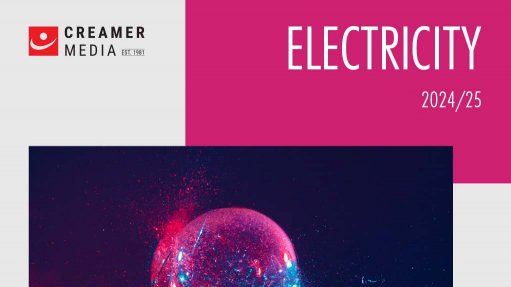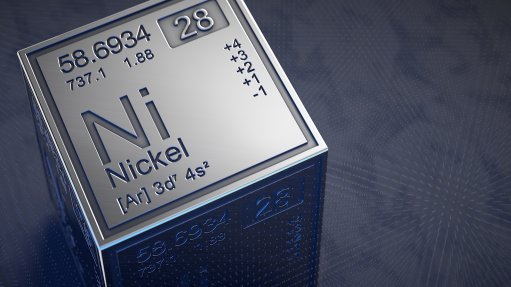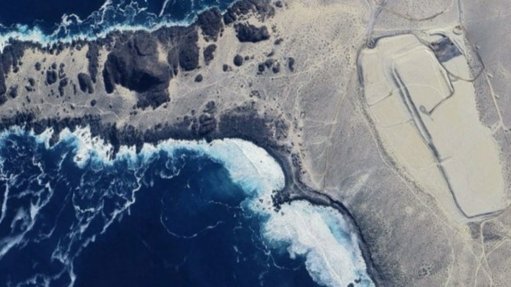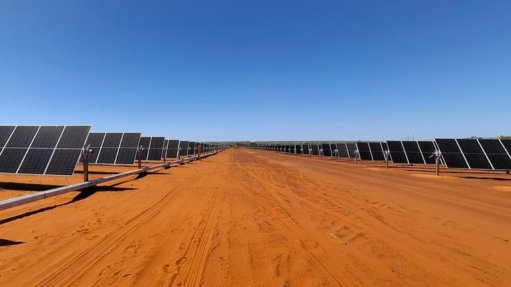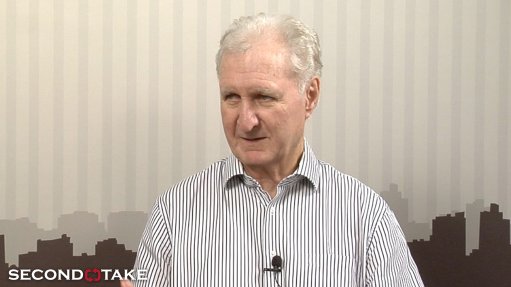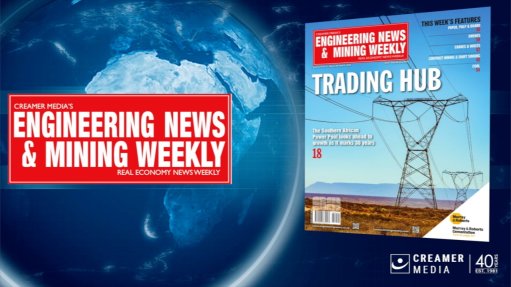New polishing facility a boost to Dubai’s status as a diamond trading centre


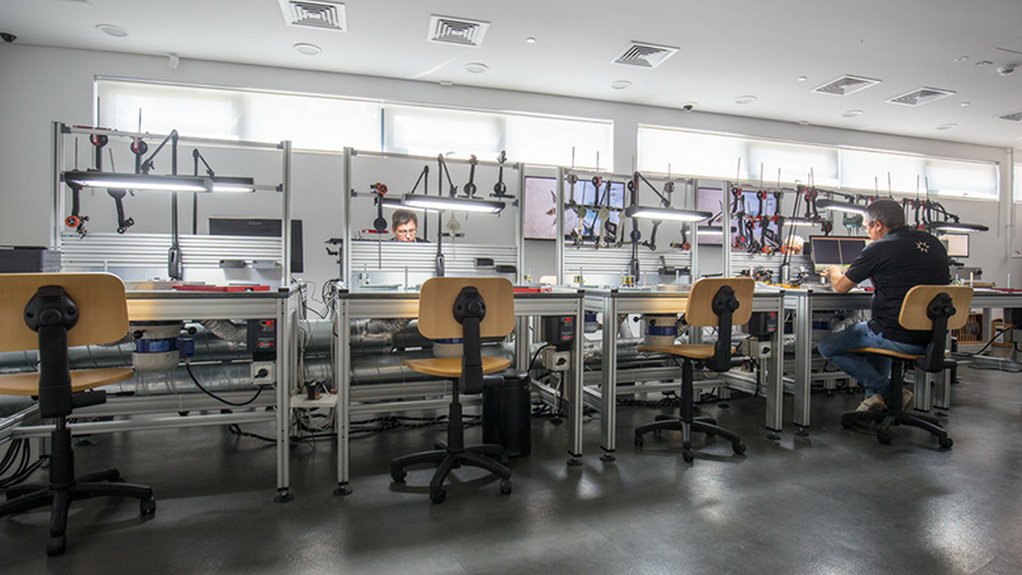
ALMAS DIAMOND SERVICES Dubai-based diamond trading company Nemesis International opened its diamond polishing factory, Almas Diamond Services, in October
The global diamond industry is either growing in affluent regions or remaining steady in less affluent ones, thereby reflecting a degree of positivity, as well as signs of growth. This also points to untapped potential that is ready to be unlocked through increased investment upstream and downstream, says diamond industry integrity organisation World Federation of Diamond Bourses (WFDB) president Ernie Blom.
Driven by demand from the international market for luxurious large-stone diamond jewellery, a significant degree of this untapped market potential to beneficiate (cut and polish) diamonds has been unlocked by a rapidly expanding and thriving trading environment in Dubai with the launch of a high-tech, diamond- polishing factory.
Dubai-based diamond trading company Nemesis International announced the opening of its diamond polishing factory – Almas Diamond Services – during the 2017 Dubai Diamond Conference, held in October. The conference was hosted by the Dubai Multi Commodities Centre (DMCC), which has a diamond-specific platform called the Dubai Diamond Exchange.
Almas Diamond Services is a partnership with Angolan national diamond trading company Sodiam, which, in turn, is a subsidiary of Angola-based State-owned diamond prospecting, mining, trading and polishing company Endiama.
Referring to Almas Diamond Services, DMCC executive chairperson Ahmed Bin Sulayem says Dubai now has the “complete package or one-stop shop” for trading in cut and polished diamonds, adding that Dubai has become a major importer of rough diamonds that can be cut and polished by master craftspeople. “[Almas Diamond Services] joins the world-class facilities that the Almas Tower offers, including customs, insurance, banking, a Kimberley Process office and international tenders of a wide range of rough diamonds.”
The beneficiation and trade of diamonds in Dubai constitute a large and expanding industry, with rough diamonds worth $14-billion imported and exported in 2016. Dubai is currently the third-largest diamond trading centre in the world, after Antwerp, in Belgium, and India.
Blom points out that the most efficient countries for polishing diamonds are India and China, as “their cost per carat for polishing is far less than in any other country”.
The success of the Dubai trade in diamonds has centred on its niche focus of beneficiating only large stones, with a subsequent focus on making this process as efficient as possible, says Blom. This results in the cost of cutting and polishing diamonds in Dubai being more economically feasible for large stones.
To polish the entire size range of diamonds in Dubai is not really economically viable, he states, adding that Nemesis International’s focus on polishing only large, expensive stones “mitigates any cost per carat issue”.
Blom also points out that some of the most highly skilled diamond beneficiation technicians have been head-hunted to work at Nemesis International. “They have taken the foremost artisans who specialise in polishing big stones,” he says, adding that Nemesis International is a diamond beneficiation centre for experts, run by experts and is also equipped with state-of-the-art facilities.
Blom notes that, historically, India was known to specialise in polishing cheaper diamonds. However, owing to an about-turn in its diamond beneficiation industry’s techniques and methodology, India is currently a diamond beneficiating centre of global renown that “has managed to become far more efficient and proficient – now they polish every diamond, perfectly”.
South Africa Falling Behind
He adds that it is quite disappointing that South Africa has failed to have a stake in this global diamond beneficiation sector because of a lack of investment. South Africa used to be the third-largest diamond trader in terms of cut and polished diamonds, but has since slipped to being the fifth-largest cutter and polisher because of the declining numbers of skilled polishers. “[In] its heyday, South Africa had 4 500 polishers, but that number has declined to about 300 today . . . maybe fewer.”
According to 2016 statistics from diamond certification scheme the Kimberley Process, South Africa produced more than 8.3-million carats, imported about 500 000 ct and exported more than 10.6-million carats of rough diamonds that year.
Blom highlights that South Africa has a robust diamond mining and rough diamond trading base; however, it is the beneficiating industry which is underperforming. “The cutting and polishing industry is being severely impeded, with low numbers of technicians . . . although this volume seems to have stopped decreasing, it is not good news for the local industry.”
However, the country’s diamond trading industry is performing sufficiently well, he says, adding that this is good for the diamond mines. Blom says South Africa has a very robust trading industry, with good volumes of tenders and sales, and it gets a lot of overseas buyers coming in, which supports the prices.
“I am fairly comfortable with the state of [South Africa’s] trading industry; we are not doing badly at all.”
The success of Almas Diamond Services and the Dubai Diamond Exchange is driven by the fact that the DMCC is a free-trade centre that does not incur any taxes, he says.
However, according to the Middle East branch of audit and assurance, tax and consulting services firm PwC, the tax-free trading environment may soon change, with the February announcement by United Arab Emirates (UAE) Minister of State for Financial Affairs Obaid Humaid Al Tayer that the UAE will implement value-added tax (VAT) at the rate of 5% as of January 1.
“This could severely affect the Dubai diamond industry. The industry is currently trying its best to be 0% VAT-rated, [but a decision on this] might be known only this month,” suggests Blom.
State of Industry
Blom states that the international diamond beneficiation industry is performing well, with markets either growing or remaining unchanged and, although a stagnant market is not necessarily good, the fact that markets are not contracting illustrates diamonds’ “staying power”.
The top international markets comprise those of the US, China and India, in order of size. “The US is still the largest market for diamond jewellery. The country has also experienced significant growth in the past year (4% from the previous year),” says Blom, adding that demand and interest from China are “coming up quite strongly after lulling for some time”.
In line with expansion in India, other countries in Asia are also showing signs of emergence. “Asia has about 600-million consumers that are in the upper- and middle-class bracket, with a significant volume of disposable income.”
However, the bulk of countries in Europe are either stagnant or experiencing little growth. “Japan, which is also a fairly big consumer of diamonds, is also currently stagnant,” says Blom.
Meanwhile, remarks have been made by various industry stakeholders and concerned parties that trade in beneficiated diamonds (the finished product of diamond jewellery) will soon face declining sales and interest, as a result of less disposable income by younger generations of consumers. This is having an impact on the market, with fewer Millennials buying diamonds and instead investing in “memories and experiences” in keeping with industry sentiment – in reference to spending money on holidays and fun experiences.
In addition, the emergence of cheaper and seemingly more appealing alternatives to expensive and lavish diamond jewellery is driving a buying trend among younger consumers away from investing in diamonds for themselves and their loved ones, he says. “Diamonds are competing against an array of luxury products such as branded handbags, holidays, phones and wearable technology.”
The disinterest of Millennials, and the youth in general, in diamonds is of great concern to the WFDB, diamond miners and the diamond jewellery industry. “This is a massive issue and a worry for the industry,” says Blom.
However, he notes that various diamond industry parties and organisations have begun to implement plans to arrest an unfolding decline in diamond demand, with innovative marketing plans aimed at younger generations, especially Millennials. “The WFDB is actively marketing towards this generation. It is highly imperative to market diamonds to future consumers.”
New Marketing
Blom says diamond mining major De Beers conducted “almost all” the advertising and marketing for diamonds. “It was, to a certain extent, unfair, but, in turn, [it] had control over more than 80% of the market.” Now, De Beers is solely promoting its brands of diamonds.
This has led to a void in the industry in terms of marketing. However, Blom points out that diamond producers have invested a lot of money in the Diamond Producers Association (DPA), an organisation that was established in 2015 by the seven largest diamond producers – of which De Beers and Russian diamond miner Alrosa are the two biggest players – as well as South African diamond miner Petra Diamonds.
The DPA entered 2016 with a $6-million budget, but it quickly became apparent that this budget was “totally inadequate”, he points out. Consequently, the DPA’s budget was increased to $57-million in 2017 and Blom believes that it will increase further for 2018.
A key mandate of the DPA is to actively market diamond jewellery to Millennials and future generations. In the words of the DPA, it aims to “maintain and enhance consumer demand for and confidence in diamonds”.
Hopefully, this will combat the move away from diamond jewellery, while maintaining the status of diamond jewellery as a luxury product, Blom enthuses.
Plans implemented by the DPA, thus far, have been good, he says, with the major markets (starting with the US) being targeted first. He adds that the DPA recently appointed an MD for India and is also targeting China. The DPA will expand into other key markets in order to reach a broader, international base.
The international sales of diamond jewellery are driven largely by different seasonal occurrences, such as Thanksgiving in the US, the Chinese New Year, Diwali, Christmas and Valentine’s Day.
Indicators of international sales performance are good, thus far, according to Blom, who states that US sales have been high, preceding the first tranche of consumption following Thanksgiving, in addition to significant interest in Hong Kong diamond trade shows.
Comments
Press Office
Announcements
What's On
Subscribe to improve your user experience...
Option 1 (equivalent of R125 a month):
Receive a weekly copy of Creamer Media's Engineering News & Mining Weekly magazine
(print copy for those in South Africa and e-magazine for those outside of South Africa)
Receive daily email newsletters
Access to full search results
Access archive of magazine back copies
Access to Projects in Progress
Access to ONE Research Report of your choice in PDF format
Option 2 (equivalent of R375 a month):
All benefits from Option 1
PLUS
Access to Creamer Media's Research Channel Africa for ALL Research Reports, in PDF format, on various industrial and mining sectors
including Electricity; Water; Energy Transition; Hydrogen; Roads, Rail and Ports; Coal; Gold; Platinum; Battery Metals; etc.
Already a subscriber?
Forgotten your password?
Receive weekly copy of Creamer Media's Engineering News & Mining Weekly magazine (print copy for those in South Africa and e-magazine for those outside of South Africa)
➕
Recieve daily email newsletters
➕
Access to full search results
➕
Access archive of magazine back copies
➕
Access to Projects in Progress
➕
Access to ONE Research Report of your choice in PDF format
RESEARCH CHANNEL AFRICA
R4500 (equivalent of R375 a month)
SUBSCRIBEAll benefits from Option 1
➕
Access to Creamer Media's Research Channel Africa for ALL Research Reports on various industrial and mining sectors, in PDF format, including on:
Electricity
➕
Water
➕
Energy Transition
➕
Hydrogen
➕
Roads, Rail and Ports
➕
Coal
➕
Gold
➕
Platinum
➕
Battery Metals
➕
etc.
Receive all benefits from Option 1 or Option 2 delivered to numerous people at your company
➕
Multiple User names and Passwords for simultaneous log-ins
➕
Intranet integration access to all in your organisation






